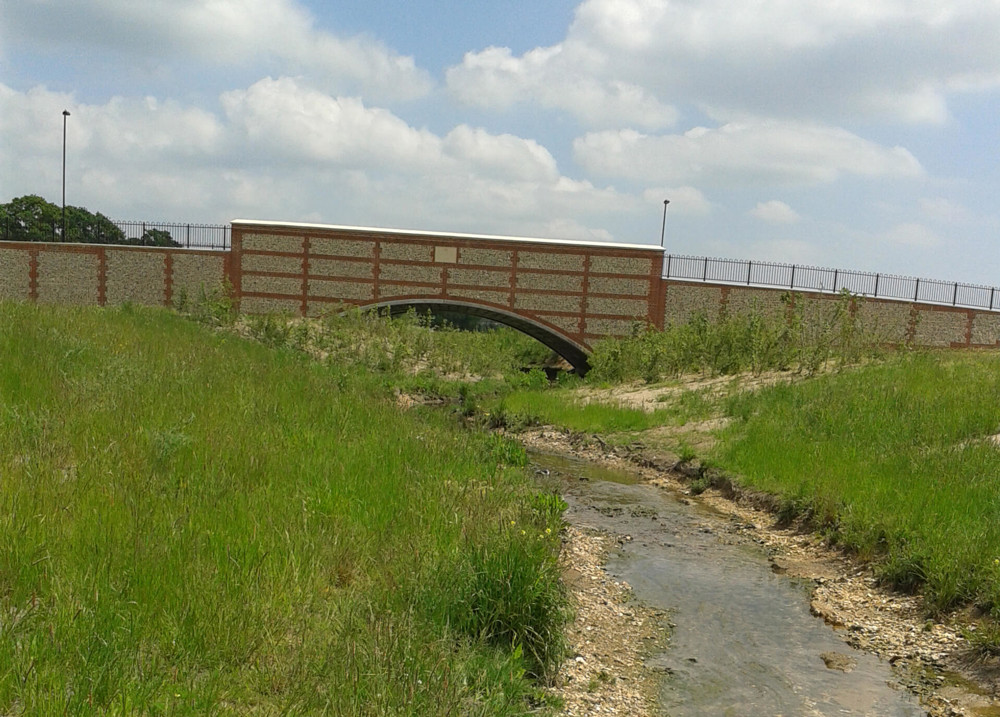
Infrastructure Design
Environmental Assessment
Details

When the site was first considered, the river was contained within a concrete trapezoidal channel, with concrete plank bridges forming farm access across the watercourse. The extent of natural planting was that which could not be cultivated adjacent to the channel. As part of the development the Local Planning Authority, Winchester City Council, in consultation with the Environment Agency, made it a requirement to naturalise the section of River Wallington crossing the site.
The aim was to improve the ecology and amenity, and make the river an accessible feature of the development, but also be part of the flood risk mitigation strategy, as the enlarged river corridor provided additional flood attenuation and reduced the extent of floodplain on site.
The river bisects the development area, with an access road linking the site across the channel. As such a suitable crossing needed to be proposed, that was in keeping with the Hampshire vernacular.
A flexiarch bridge, encased in red brick and flint was designed to carry pedestrians, cyclists and vehicles across the watercourse. The whole structure was to be topped with parapets, reconstituted stone coping and railings. Working as part of a team of consultants, Mayer Brown acted as the overseeing lead designer, carried out the geometric design and was Client’s Representative on site.
All aspects of the bridge design were subject to a thorough approvals process administered by Hampshire County Council.
The works followed stages, firstly, to re-route the river around the works through an alternative channel, with consideration to potential silt filtration and the ecology of the river. The second stage was removal of the concrete sections and regrading and profiling of the channel, to create an accessible feature to compliment the development and work as part of the surface water management on the site.
The next phase was installation of the groundworks, foundations and structure for the largest Flexiarch bridge in Europe. The elements of the bridge were brought onto site directly from Ireland, before the completion with the surface detailing and roadway construction.
The river banks have been stabilised with shrub planting, hydroseeding and planted coir rolls to await the next phase of detailed landscaping works. The existing ecology of the site was a major consideration throughout the whole process, with routes provided for mammals, use of appropriate plant species as advised by the ecologist and building techniques to protect the balance of the site.
The result fulfils its technical requirements, but also provides an attractive focal point within the site. The wider restoration works open up the river, allowing it to be an area of amenity and interest, also helping reduce flood risk in a newly populated area. Striving to provide an insight in how water can be a positive aspect in development, not a blight.
For further information please contact enquiry@mayerbrown.co.uk
Please leave us your details and we will endeavour to call you back as soon as we can.






